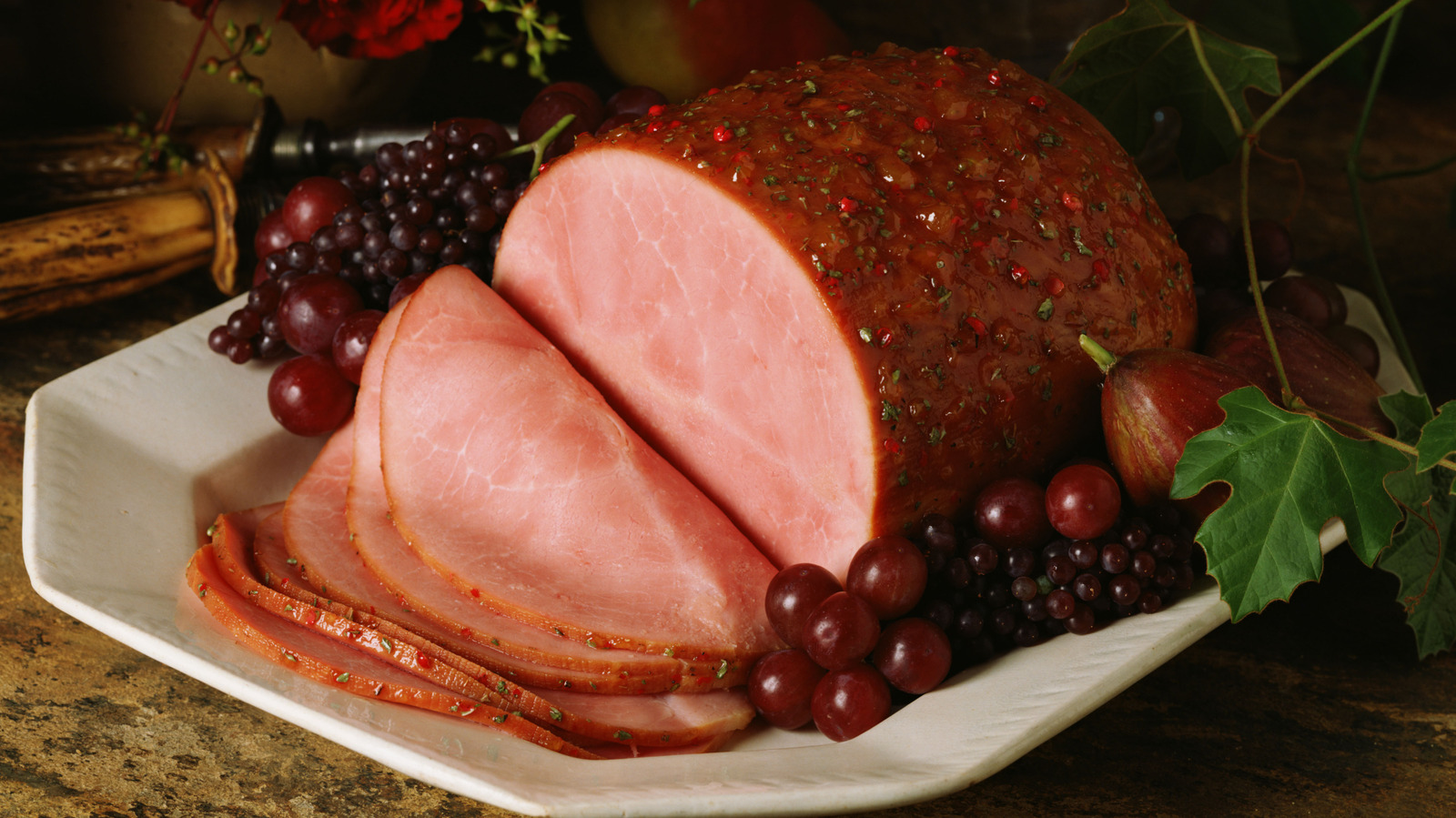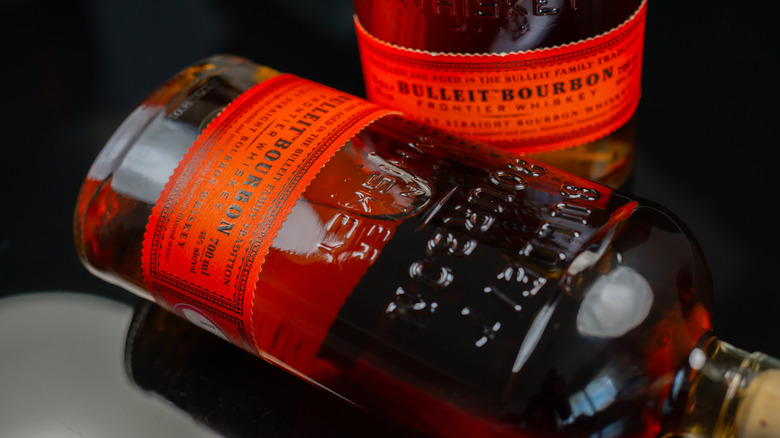Glazed ham may seem like one of those complicated dishes reserved for a special brunch during the holidays and enjoyed at home only when ordered pre-cooked and ready to eat or reheat. But preparing recipes like this honey-mustard glazed ham can actually be pretty easy. There are some simple techniques to help you achieve success, such as always leaving your ham covered during baking and waiting to glaze your ham until 20 minutes before it’s cooked. Once you’ve got the basics down, reach for the whiskey to add more incredible flavor to your ham glaze.
Although there are dozens of variations, at its most basic, ham glaze consists of two components: sweet and sugary ingredients plus tart and vinegary ones, all cooked down into a thick syrup. Whiskey blends beautifully into this configuration, giving your glaze a deeper, richer flavor with a touch of smokiness. The whiskey will highlight the savory ham and add some extra tang to cut through the heavy salt content. It’s a simple way to add some complexity to the sweet and sticky caramelization coating your ham when it comes out of the oven.
What you need to know for an easy whiskey-glazed ham
First of all, almost any whiskey will work for glazing a ham, but for a nice balanced sweetness with just the right amount of smokiness, bourbon is a great choice. Irish whiskey also works nicely and will add more bright sharpness. On the other hand, a heavily peaty Scotch may be in danger of adding too much flavor, especially if you’re aiming for a traditionally sweet and smooth glaze.
When preparing your glaze, common sweeteners like honey and brown sugar are both excellent options, but for a deeper and woody flavor that pairs nicely with whiskey, try adding a little maple syrup. From there, Dijon mustard or apple cider vinegar are classic acidic additions to a ham glaze. When it comes to baked ham flavor profiles, whiskey is pretty versatile and blends harmoniously with ingredients like cloves, cinnamon, and ginger to enhance the spiced undertones without merely piling on flavor or muddying it up.
Take care when cooking down your whiskey-infused glaze — you want to bring it just to a boil, so you don’t burn your sugars. You also want to make sure the aroma has turned sweet, a sign that most of the alcohol has cooked off. If the glaze contains too much residual alcohol, it could burn in the oven, leaving you with an overly tart, pungent flavor. Once your ham is out of the oven, you can turn up the flavor with a kitchen torch. And what do you drink with your glazed ham? Why, whiskey, of course.





